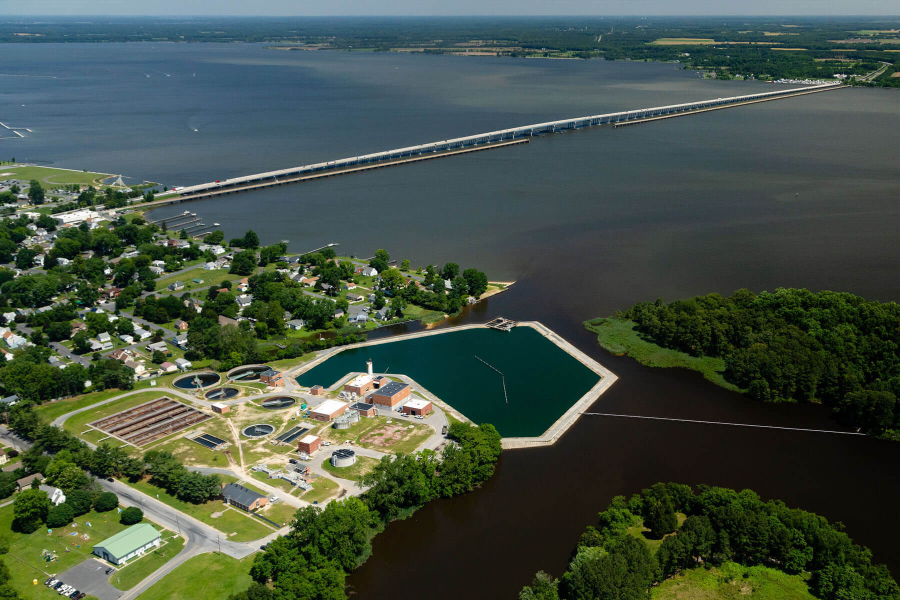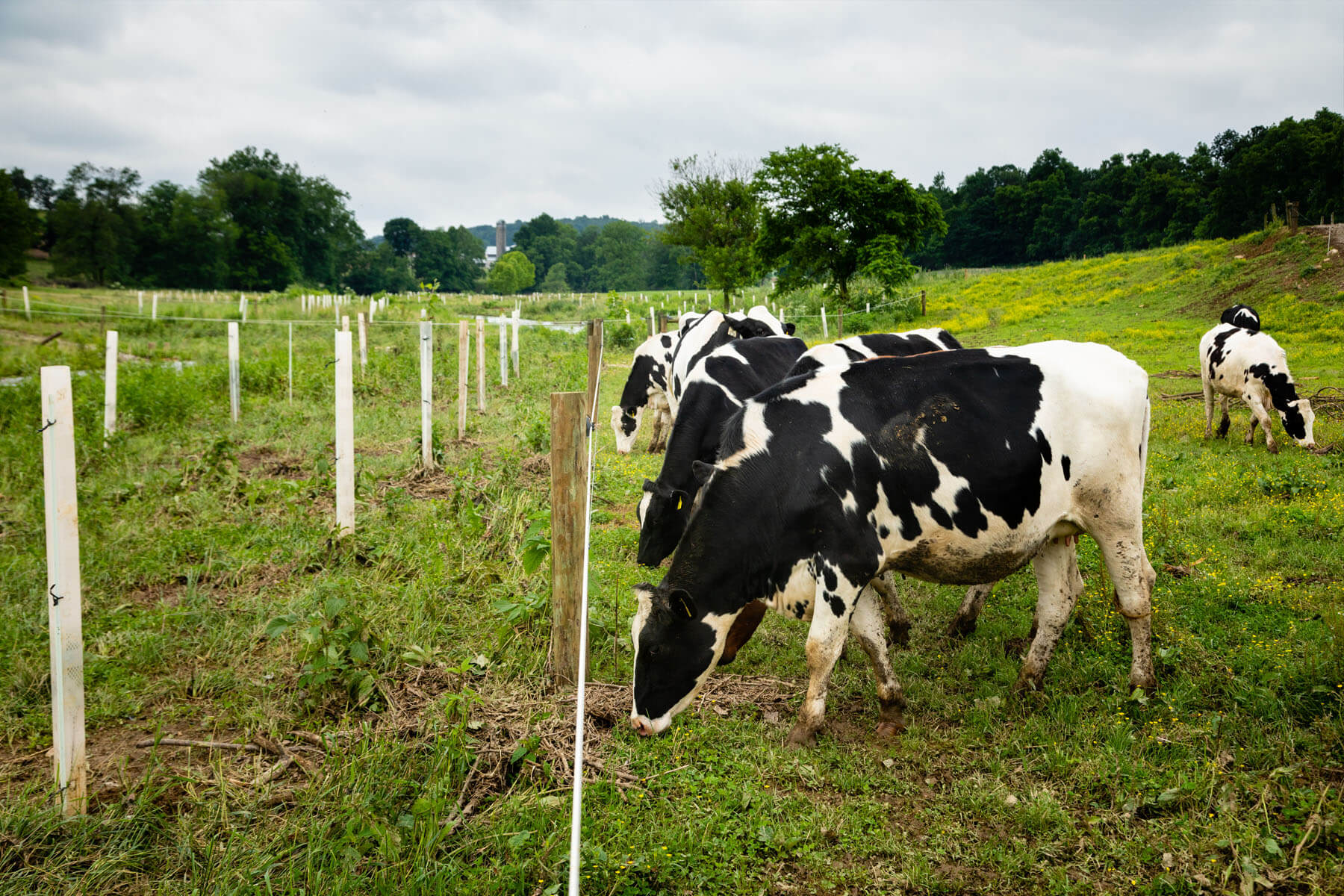Chesapeake Bay Program partnership exceeds 2017 pollution reducing targets for phosphorus, sediment
Additional work is needed to close gap in reducing nitrogen

According to the Chesapeake Bay Program’s Watershed Model (Phase 5.3.2), the partnership has exceeded its 2017 pollution reducing targets for phosphorus and sediment. In fact, pollution controls put in place between 2009 and 2017 in Delaware, Maryland, New York, Pennsylvania, Virginia, West Virginia and the District of Columbia have lowered phosphorus and sediment loads by 21 and 10 percent, respectively.
Experts attribute this drop in estimated pollution loads to technological upgrades at wastewater treatment plants and the increased implementation of agricultural best management practices (BMPs). While computer simulations also show an 11 percent drop in the amount of nitrogen entering the nation’s largest estuary, the partnership fell short of its 2017 nitrogen reducing target. The implementation of BMPs in both the agricultural and urban sectors will need to accelerate to close this gap.
Since the Chesapeake Bay Total Maximum Daily Load (Bay TMDL) was established in 2010, the seven watershed jurisdictions have been working toward a shared goal: to implement the pollution reducing practices that would achieve 60 percent of the prescribed pollution reductions by 2017. (All of the pollution reducing practices that will be necessary to meet water quality standards should be in place by 2025.) Practices are currently in place to achieve 40 percent of the necessary nitrogen reductions, 87 percent of the necessary phosphorus reductions and 67 percent of the necessary sediment reductions.
 The implementation of agricultural best management practices will need to accelerate if the Chesapeake Bay Program partnership is to meet its nitrogen reducing goals. Here, dairy cows in Lancaster County, Pennsylvania, graze near a fence designed to keep them out of Big Beaver Creek. (Photo by Will Parson/Chesapeake Bay Program)
The implementation of agricultural best management practices will need to accelerate if the Chesapeake Bay Program partnership is to meet its nitrogen reducing goals. Here, dairy cows in Lancaster County, Pennsylvania, graze near a fence designed to keep them out of Big Beaver Creek. (Photo by Will Parson/Chesapeake Bay Program)
“We continue to be encouraged by the decreasing nutrient and sediment loads entering the Bay,” said Chesapeake Bay Program Acting Director Jim Edward in a media release. “As we move forward to 2025, it is imperative that we call increase our efforts, especially in reducing nitrogen pollution across all sectors, as we continue to work together to ensure that the partnership is successful in achieving a healthier Chesapeake Bay ecosystem.”
Excess nitrogen, phosphorus and sediment are among the leading causes of the Bay’s poor health. Nitrogen and phosphorus can fuel the growth of algae blooms that lead to low-oxygen “dead zones” in deep waters. Sediment can suffocate shellfish and block sunlight from reaching underwater grasses. Pollution reducing practices in backyards, in cities and on farms can lower the flow of nitrogen, phosphorus and sediment into waterways.
Model-generated estimates of pollution loads by state and source are just one in a suite of tools the U.S. Environmental Protection Agency (EPA) uses to determine whether jurisdictions are on track to meet their own pollution reducing milestones and the Bay TMDL. The EPA also considers BMP implementation, BMP effectiveness and jurisdictional progress toward implementing programs that will achieve pollution cuts.
The Watershed Model generated the following information about pollution loads by state between 2009 and 2017:
- In Delaware, pollution controls have lowered nitrogen loads eight percent, phosphorus loads 21 percent and sediment loads 18 percent. The state fell short of its 2017 pollution reducing target for nitrogen, but exceeded its targets for phosphorus and sediment.
- In the District of Columbia, pollution controls have lowered nitrogen loads 45 percent and sediment loads six percent. (Estimated phosphorus loads have experienced a slight increase.) The District has exceeded each of its 2017 pollution reducing targets.
- In Maryland, pollution controls have lowered nitrogen loads 10 percent, phosphorus loads 18 percent and sediment loads 15 percent. The state fell short of its 2017 pollution reducing target for nitrogen, but exceeded its targets for phosphorus and sediment.
- In New York, pollution controls have lowered nitrogen loads 2 percent, phosphorus loads 22 percent and sediment loads 3 percent. The state fell short of its 2017 pollution reducing targets for nitrogen and sediment, but exceeded its target for phosphorus.
- In Pennsylvania, pollution controls have lowered nitrogen loads five percent, phosphorus loads 16 percent and sediment loads 10 percent. The Commonwealth has fallen short of each of its 2017 pollution reducing targets.
- In Virginia, pollution controls have lowered nitrogen loads 18 percent, phosphorus loads 26 percent and sediment loads seven percent. The Commonwealth fell short of its 2017 pollution reducing target for sediment, but exceeded its targets for nitrogen and phosphorus.
- In West Virginia, pollution controls have lowered nitrogen loads seven percent, phosphorus loads nine percent and sediment loads 27 percent. The state has exceeded each of its 2017 pollution reducing targets.
The EPA is expected to release its evaluations of jurisdictional progress toward the Bay TMDL this summer. Jurisdictions are expected to publish drafts of their Phase III Watershed Implementation Plans (WIPs)—which outline the strategies they will take to meet the Bay TMDL—in April of 2019.

Comments
Why is 2017 info being reported?
Thank you!
Your comment has been received. Before it can be published, the comment will be reviewed by our team to ensure it adheres with our rules of engagement.
Back to recent stories